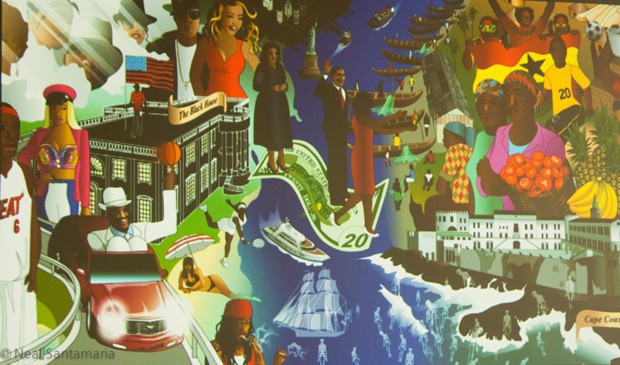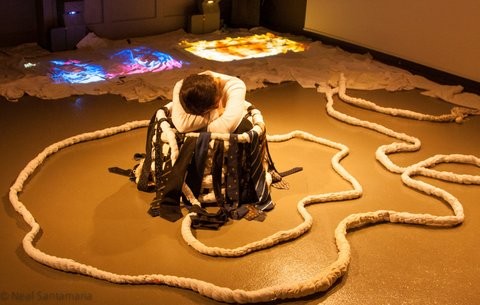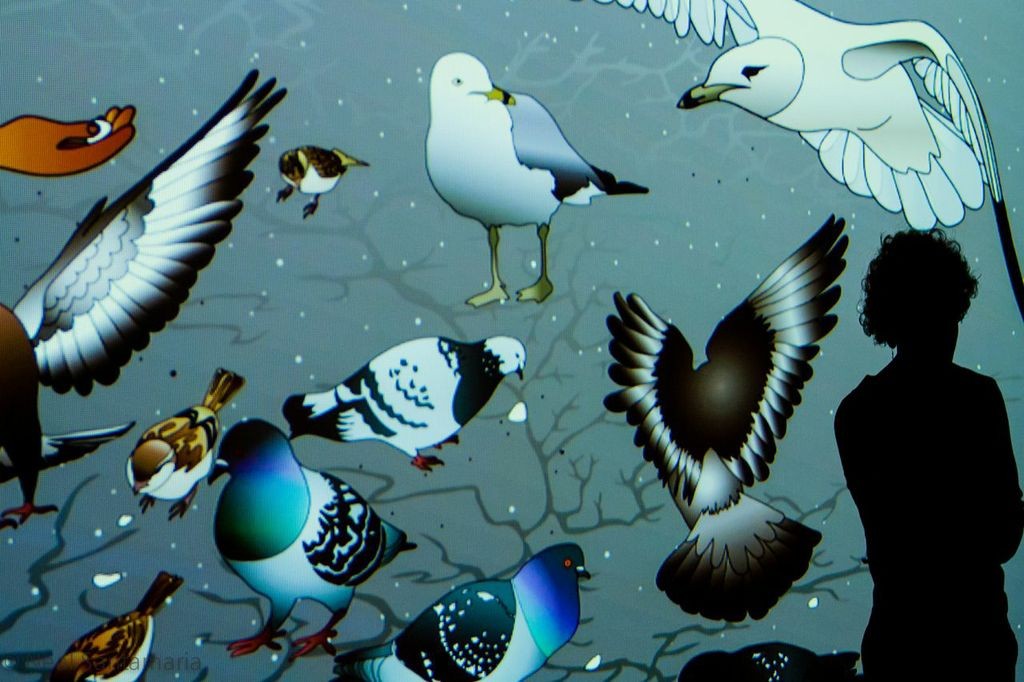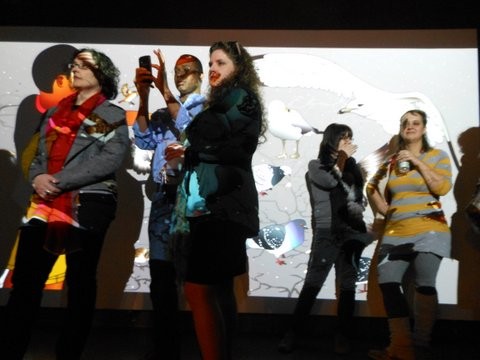Be part of the art
 The CounterMemories exhibition in New York City showcases art by two Concordia alumnae, including this installation called “Justice Takes A Holiday” by Mona Sharma. When the viewer stands between the projector and the image on the wall, they become part of the artwork. | All photos courtesy of Neal Santamaria and Jill Strauss
The CounterMemories exhibition in New York City showcases art by two Concordia alumnae, including this installation called “Justice Takes A Holiday” by Mona Sharma. When the viewer stands between the projector and the image on the wall, they become part of the artwork. | All photos courtesy of Neal Santamaria and Jill Strauss
Viewers transform into participants at CounterMemories, an interactive exhibition that premiered at Concordia’s Centre for Ethnographic Research in the Aftermath of Violence last spring and is travelling stateside this month for a four-day run in New York City.
CounterMemories features installations, performances and projections by alums Khadija Baker, MFA 13, and Mona Sharma, MFA 12. The two Montrealers explore the role that art can play in restorative justice: the process of righting social and legal wrongs through dialogue and restitution.
As the 2012-13 Fulbright Research Chair in North American Society and Culture at Concordia, CounterMemories’s curator Jill Strauss researched "restorative practices and the visual interpretation of narrative and difficult histories." We sat down with her.
What motivated you to collaborate on CounterMemories?
Jill Strauss: Normally, the curator chooses the artist to work with, but in my case the artists chose me — twice!
Work by artists like Mona and Khadija is incredibly important because it asks how can art be about peace-building. These are really challenging issues because many people think about the arts as “fluffy,” and many people think about peace as even fluffier.
What is restorative justice?
JS: Restorative justice is inspired by the First Nations ritual of sitting in circle and addressing wrongs that have been done in the community.
Whereas the western legal system only looks at the individual and the state, restorative practices acknowledge that when someone has been wronged, everyone who this individual is connected to is affected. It asks how the wrongs can be addressed without isolating the “perpetrator” from their community, and how everybody who was directly affected can be involved in how those wrongs are righted.
How does CounterMemories express this?
JS: The idea of accountability, of taking responsibility, of telling our or another’s experience and being heard empathetically — these are all things that both artists do so well and they fit right in with restorative justice.
For example, Khadija’s art addresses the Syrian civil war. Those of us in North America may feel like “Well, that’s really far away” or “Oh, this is horrible, but it has nothing to do with us.” But it does — Khadija’s work forces us to make it ours by bringing us into the funerary rituals and that rite of passage. [See “I Will Talk To You Silently Today,” Image 2.]
In Mona’s case, we become part of the art. When the viewer stands between the projector and the image on the wall, they physically become part of the artwork. [See “Justice Takes a Holiday,” Images 1, 3 and 4.]
It’s quite startling to suddenly see yourself in the art.
What do you want visitors to take away from the exhibition?
JS: That we have a role to play. That we can remain witnesses if we want to, but that witnessing is also responsibility. That we can look and go “Oh, that’s terrible” and walk away, or we can be inspired to act.
I hope they take in the visual beauty, but then are also inspired to make some kind of change.
What: CounterMemories: The Challenge of Restorative Justice Practices
When: November 6 to 9, 2013
Where: Alwan for the Arts, 16 Beaver St., New York, NY


